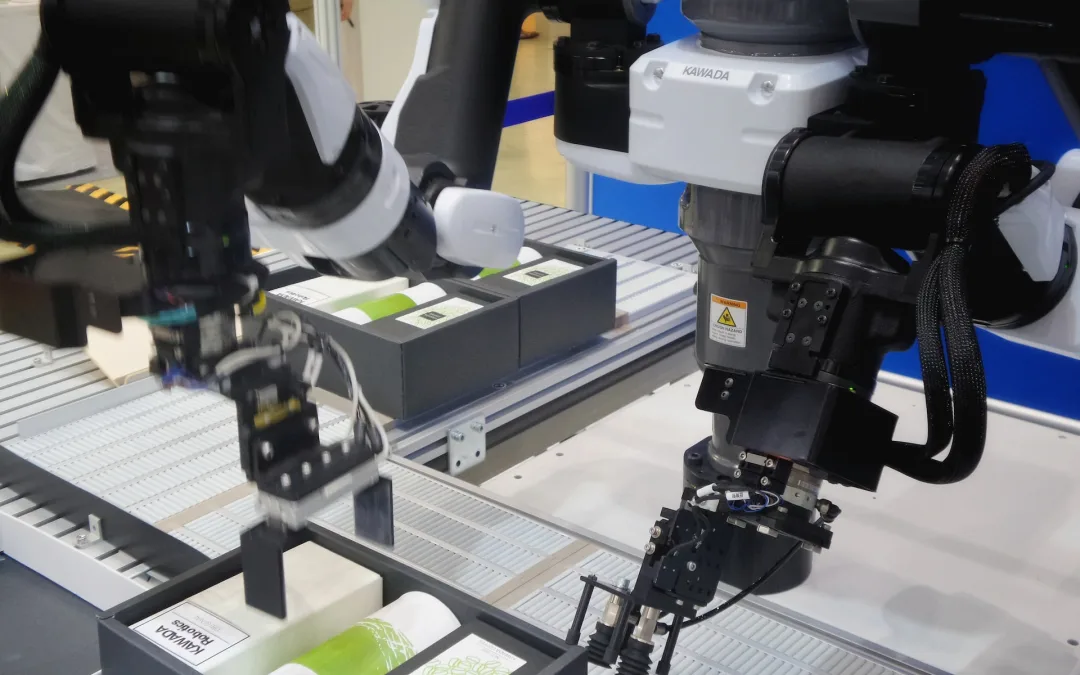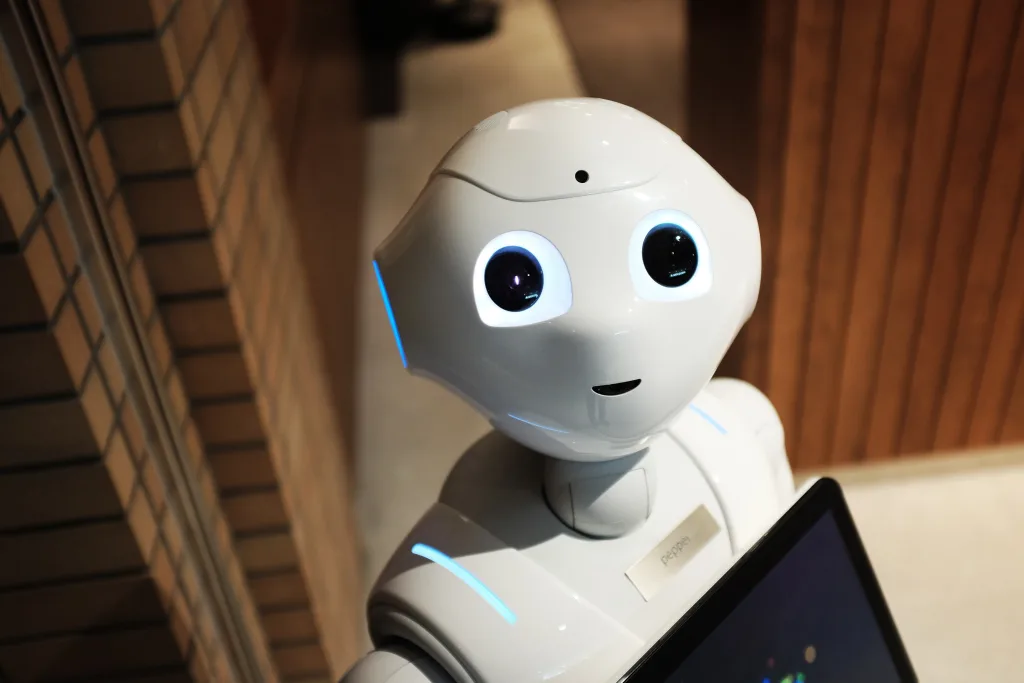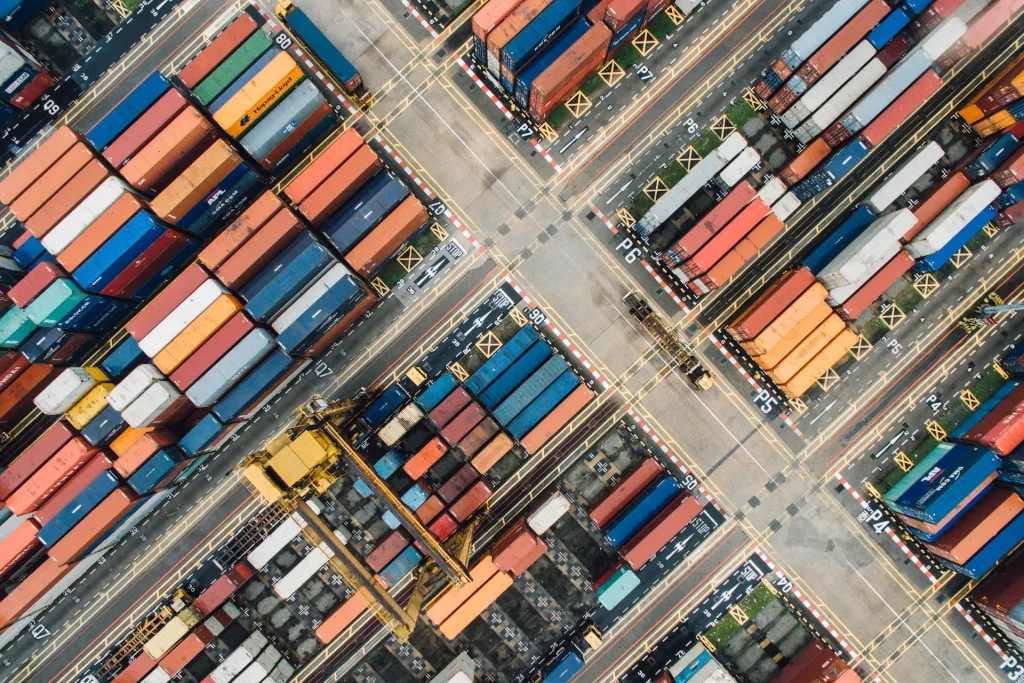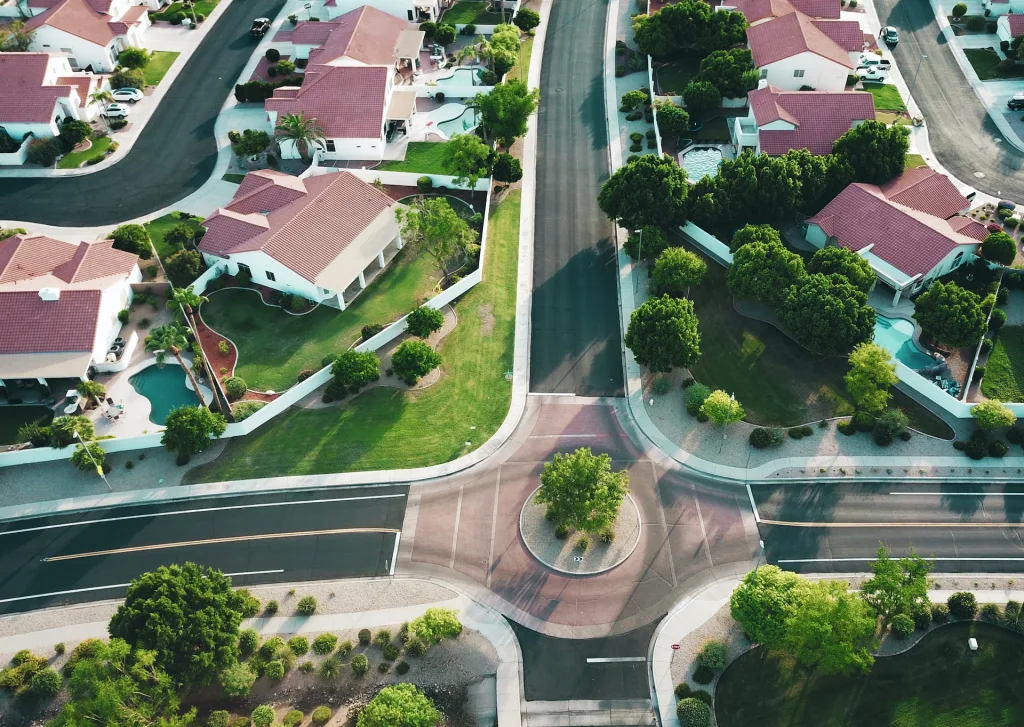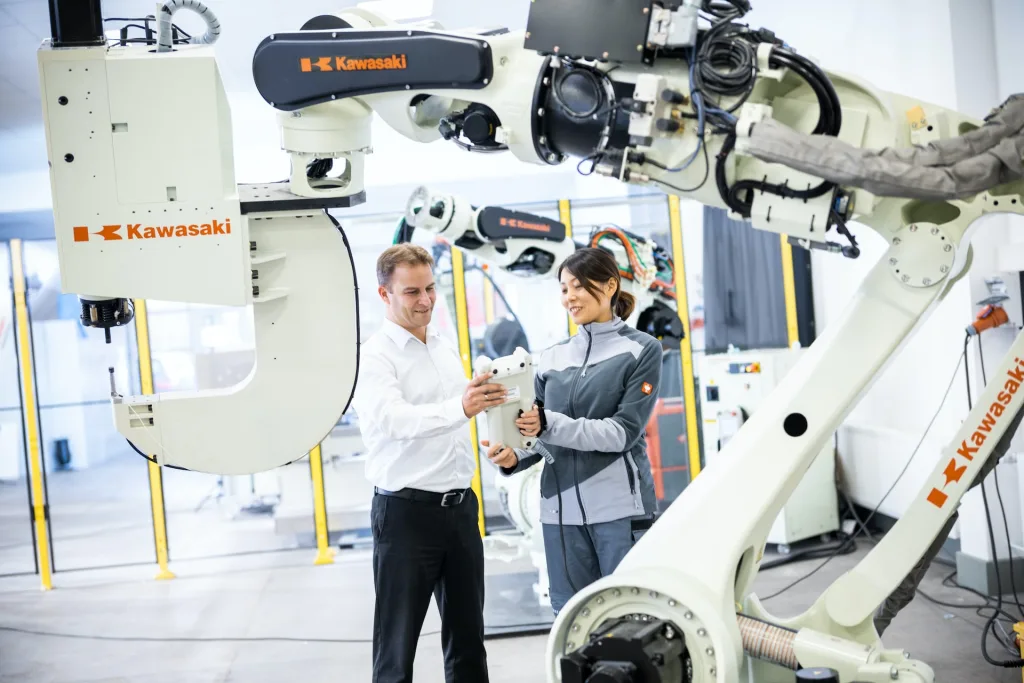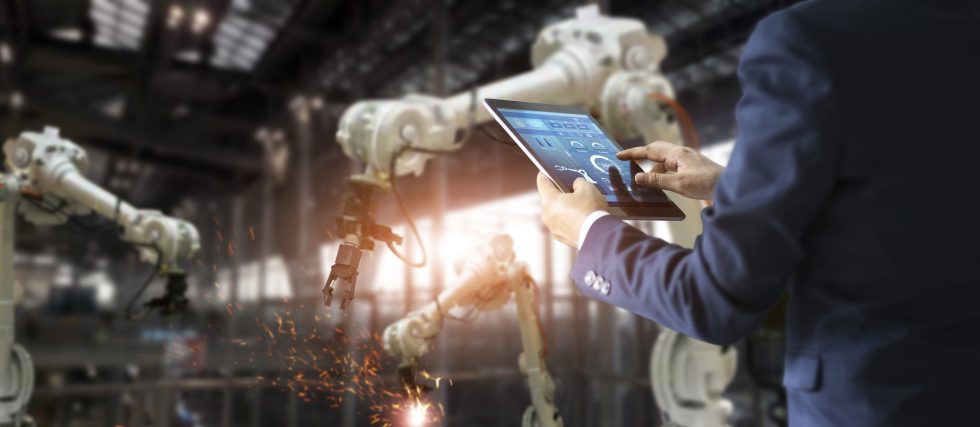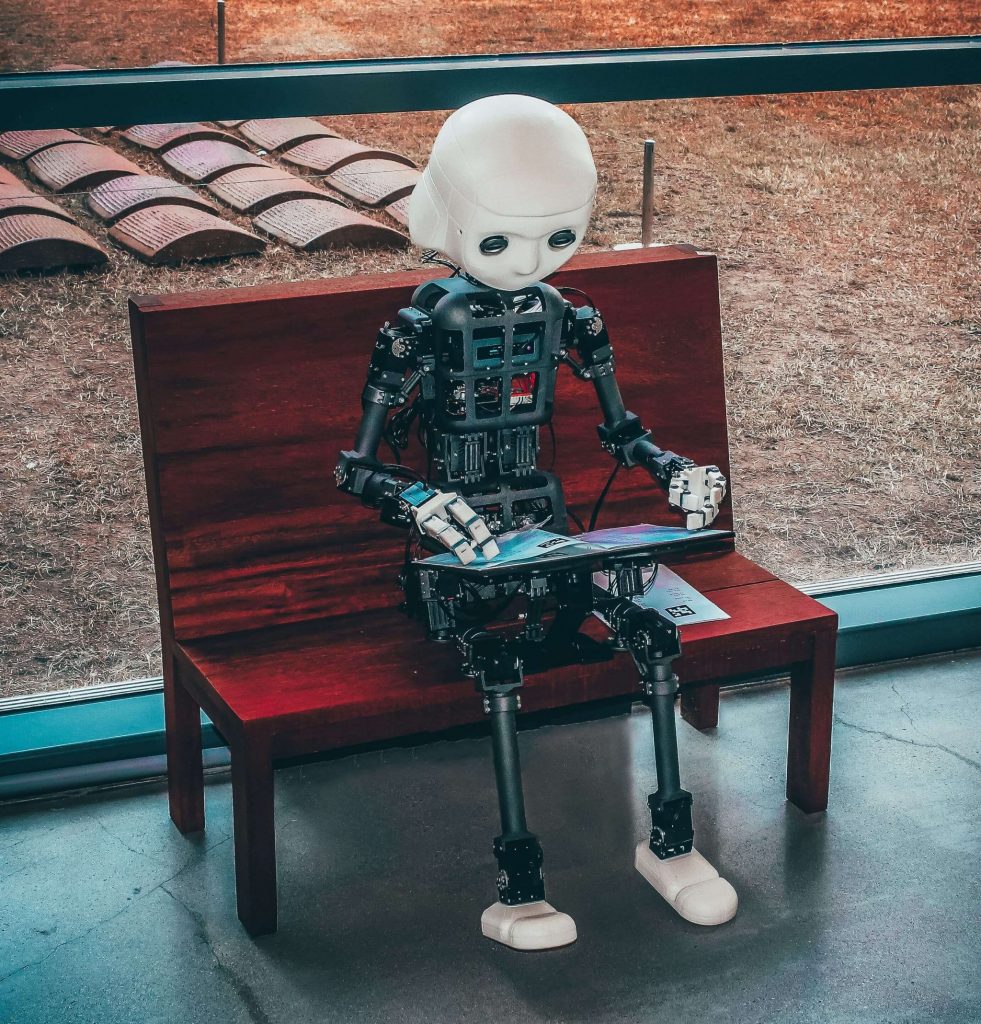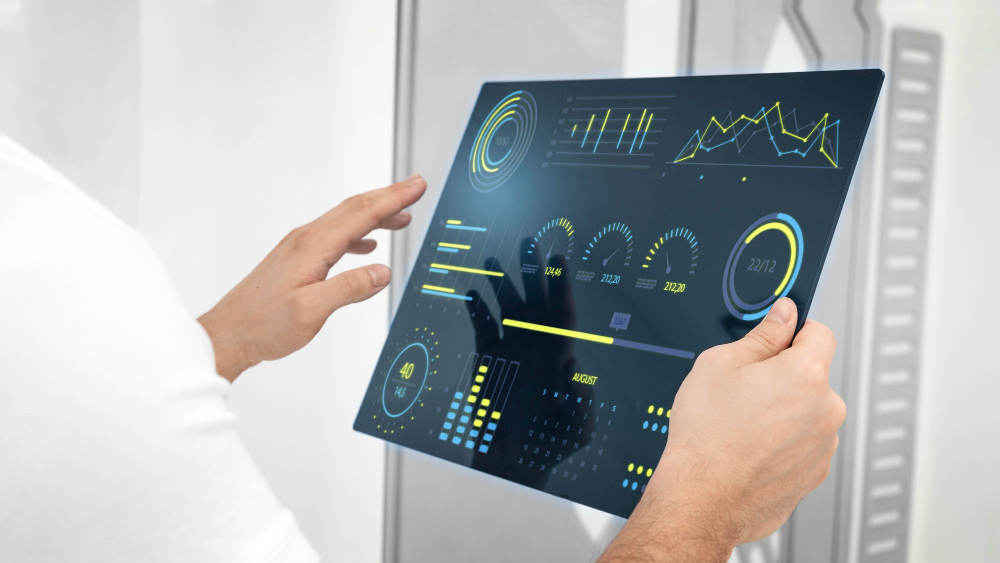RPA and AI are two exciting and innovative IT applications at the forefront of the digital transformation revolution. Both technologies are reshaping the world of work by augmenting employees and ushering in a new era of productivity. However, while RPA and AI have many similarities and points of crossover, they are distinct tools with their own strengths and weaknesses.
This article will explore the difference between automation and artificial intelligence and demonstrate where they’re used, how they work, and how they come together to help modern businesses move towards an automated future.
Definitions of RPA and AI
Before we get into the respective applications and use cases of Robotic Process Automation (RPA) and Artificial Intelligence (AI), it’s worth grounding both concepts with definitions.
1. What is RPA?
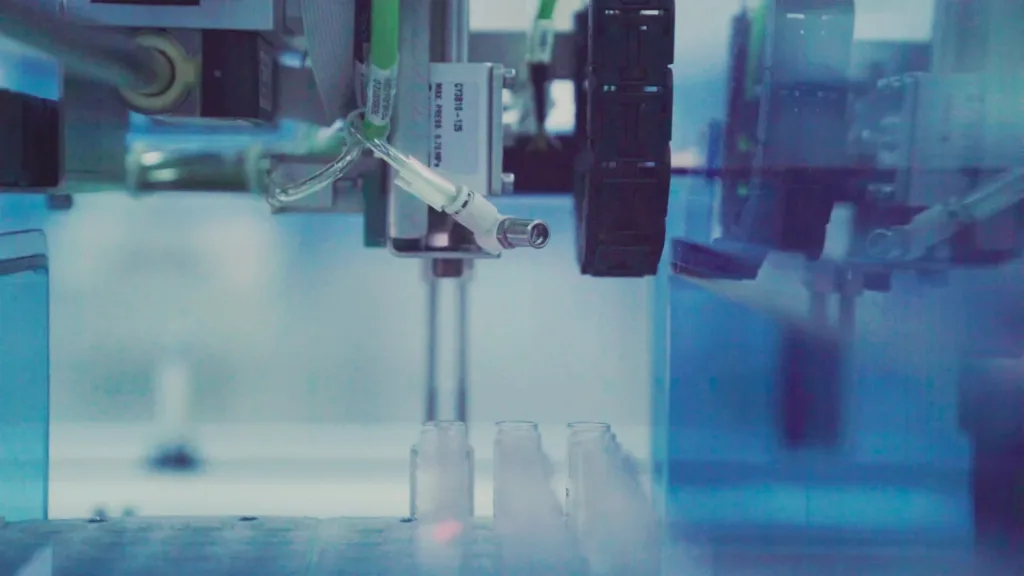
Robotic Process Automation (RPA) is a set of technologies that help automate predictable, rule-based business processes.
Business workflows consist of many tasks. Some of these tasks require human decision-making and judgment. However, many are repeatable and predictable. It is this second category that RPA is used to automate.
Much of the software that we love and use today is rule-based. Computers are excellent at carrying out well-defined orders with both speed and accuracy. As long as we give them the right instructions, they can relentlessly process information and execute tasks.
RPA is the same. However, where it excels and helps businesses is by extending these same functions across different applications, systems, and databases. In short, RPA interacts with various applications in the way that a human does. It can mimic the clicks, keystrokes, and mouse movements that occur during human-computer interactions and memorize these actions as a series of steps that are deployed when a trigger or certain condition is met.
Examples of RPA technology
- API integration
- Cross-platform scripting
- Cross-application scripting
- Digital robots or “bots”
- GUI recording tools
- No-code interfaces
2. What is AI?
Artificial Intelligence (AI) is a set of technologies that mimic human cognition. Some of these mental tasks include learning, reasoning, self-correction, object recognition, decision-making, and predictions. While this branch of computer science has been around since the 1950s, it’s made serious advances in the last ten to fifteen years.
AI is used everywhere. While Generative AI, driverless cars, and virtual assistants like Siri and Alexa grab the headlines, it also powers more prosaic but practical applications like predictive text, cybersecurity, fraud protection, search engines, personalized marketing and recommendations, and data analytics.
The AI that we have now is typically called Narrow AI. In short, it mimics human intelligence within narrow domains—for example, Deepmind’s AlphaGo or various speech recognition software. However, in the future, AI is predicted to move from specialization to more general intelligence that can handle a broader range of tasks.
Examples of AI technology
- Natural language processing
- Machine learning
- Deep learning
- Computer vision technology
- Predictive analysis
- Generative AI
3. RPA vs AI vs ML
There is a considerable amount of confusion between these technologies, with some people wondering about the relationship between robotic process automation and machine learning.
For the sake of clarity, machine learning (ML) is a type of artificial intelligence. This technology uses algorithms and statistical models to find patterns in large data sets. From there, it can output valuable insights or make predictions. The main Robotic Process Automation vs Machine Learning differences are that RPA is explicitly guided, while ML is set loose to discover its own ways of processing data.
Robotic process automation machine learning is possible when RPA tools are supplemented with AI. As a result, when used together, RPA and Machine Learning are one of the most exciting horizons within the automation space.
Applications of AI and RPA
At a surface level, RPA and AI have many similarities in how the technology is applied within business environments. Both tools are concerned with extending and augmenting human workers and allowing businesses to achieve greater productivity, accuracy, and efficiency.
1. Applications of AI
AI is used across a wide variety of industries in several remarkable ways, including:
- Predictive analysis
- Autonomous vehicles
- Facial recognition software
- Cybersecurity
- Personalization
- Marketing automation
- Pharmaceutical drug design
- Fraud detection
- Customer service chatbots
2. Applications of RPA
RPA has gained widespread adoption in the business community because it can perform a variety of jobs, such as:
- Customer and employee onboarding
- Report generation
- Data entry and migration
- Automated software testing
- Employment or credit checks
- Applicant tracking systems
- KYC automation
These applications of AI and RPA are just the tip of the iceberg. Both technologies have been adopted across enterprises to help automate endless amounts of tasks to drive efficiency and accuracy.
AI and RPA: Differences and similarities
There is a lot of crossover between RPA and AI, but there are some key differences you need to know.
What is the difference between AI and RPA?
1. Development
One of the best ways to consider AI and RPA is the different development processes behind each software.
RPA is process-driven. Developers map out the tasks they want to automate and turn the steps into a computer script that carries out the tasks.
AI is data-driven. It uses machine learning to find patterns in large datasets, which are trained to produce outputs. Once these algorithms function well, they can take new inputs and process new data to answer questions, make predictions, or trigger actions.
2. Thinking vs doing
One way to express the difference between artificial intelligence and automation is by comparing thinking versus doing.
RPA carries out its tasks like a loyal workhorse. It doesn’t need to think; it just needs to do.
In contrast, AI uses cognitive processes similar to human thinking. It can read emails and other forms of unstructured data to extract meaning or find patterns in data to tease out insights or even predictions. What’s more, through the use of Machine Learning, AI tools can constantly absorb new information, learn from scenarios, and improve over time.
3. Barrier to entry
RPA has achieved widespread adoption because it is cost-effective, quick to implement, and has a shallow learning curve.
AI, in contrast, is highly technical, difficult to train, and expensive, in large part due to its reliance on huge data sets.
4. Application in work environments
RPA has several use cases, such as data entry, website scraping, and invoice processing. However, it’s best suited to predictable tasks with very definite steps.
On the other hand, AI can perform a wider range of duties, such as complex data processing, intelligent decision-making, and even content creation.
What are the similarities between AI and RPA?
1. Automaton
Both RPA and AI automate tasks that were traditionally performed by human operators. While they use different technologies and go about their duties in their own ways, they both reduce the burden on human workers.
In summary, both tools are capable of both replacing human labor and augmenting human workers by mechanizing information technology tasks.
2. Integration
RPA and AI can integrate with existing business systems to extend their capabilities, make businesses more efficient, and even extend the life of legacy systems.
3. Error reduction
Both AI and RPA are significant players in tackling human error. By mechanizing business processes, businesses can reduce the monetary and reputational costs that result from preventable mistakes,
AI and RPA: Strengths and weaknesses
No tool is perfect. If you want to unlock the benefits of automation, you need to understand the strengths and weaknesses of RPA and AI.
1. AI strengths and weaknesses
Let’s explore some of the pros and cons of AI for automation
AI Strengths
- Can learn on the job
- Offers greater flexibility than RPA
- Can process unstructured data
AI weaknesses
- Expensive to develop
- Implementation is highly technical
- Requires vast datasets to train
2. RPA strengths and weaknesses
Let’s explore some of the pros and cons of RPA for automation
RPA Strengths
- Accurately automates high-volume tasks
- Cost efficient
- Quick and easy to implement
RPA weaknesses
- It can be difficult to scale
- Cannot process unstructured data
- Only suitable for narrow tasks
RPA and AI case studies
Perhaps the easiest way to understand the impact and possibilities of any technology is through case studies. Here, we present case studies for both RPA and AI to show you how they can help your business.
1. RPA cases study
A top 30 US bank with assets north of $150bn was expending a lot of work hours on mortgage processes, including data entry, document processing, data verification, and more. Aside from the manual effort, these workflows were also subject to human error. The bank worked with Ernst & Young to find a productivity-improving solution.
They used an RPA solution that could seamlessly integrate within their existing IT infrastructure to handle mortgage-related manual tasks. The results were staggering, including a 2-3x boost in efficiency, savings of $1m, and a total elimination of errors.
2. RPA Artificial Intelligence case study
Expion Health is a Gaithersburg, Maryland-based healthcare cost management solution. They help their medical insurance clients with claims management information in an industry that is notorious for variable pricing and extortionate pricing. Their workflows were manual, with insurers sending claims in both electronic and paper form. Processing claims in this manner limited their team to about 75 claims per day.
Reducing the time per claim was an issue. However, because the data was unstructured, a typical RPA solution would not work. They needed a solution that was augmented with AI, in particular, optical character recognition and natural language processing.
By implementing an RPA + AI software, they converted paper claims into PDFs, extracting the relevant data before sending pricing information to their internal system. The solution resulted in a 600% increase in the number of claims they processed each day.
How to choose between RPA and AI?
Choosing between RPA and AI is less about a battle between the two kinds of tech and more about what processes you need to automate. RPA is the best choice when you have standardized workflows, while AI is better for scenarios where things are a little fuzzier.
So, a better question to ask is, “Which situations are best for RPA, and which are best for AI?”
The best approach here is to think about the existing workflow process you want to automate. Visualize it or map it out, breaking the process into steps. Let’s use a few examples to illustrate the point.
Scenario 1
You are an accountant at a busy construction firm. One of the most time-consuming parts of your day involves recording expenses and ensuring contractors are reimbursed for items purchased to complete jobs. Employees must upload their expenses to a website portal, where you record them and update payroll to reflect these figures.
Use RPA
The steps here are predictable, and the data is structured. The steps could look something like this.
- When contractors upload an expense report, it triggers the bot
- The bot opens the expenses spreadsheet and retrieves the data
- The bot records the amount and purpose and bills it to the relevant account
- The bot also opens up the payroll software and credits the amount to the contractor’s account.
Scenario 2
Again, you’re an accountant at a busy construction firm. You have several accounts with different building suppliers. At the end of the month, they send you invoices via email. However, each firm has its own invoice templates, meaning the data is unstructured.
Use AI
AI is an umbrella term for different technologies, two of which are Optical Character Recognition and Natural Language Processing. Between these technologies, you can read and understand the invoices that appear in your email and turn them into structured data. Once your AI has parsed the information into a structured spreadsheet, you can use RPA to complete the task and record or even process the invoices.
When to use RPA and when to Use AI for process automation checklist
Here is a quick checklist to help you understand which processes are best for RPA and which are best for AI.
Use RPA:
- When work tasks are high-volume, predictable, and rule-based
- When data inputs involve structured data
- When process outcomes can be determined at the start of the process
Use AI:
- When processes are highly variable and require some form of cognition, such as complex decision-making
- When data inputs involve unstructured data
- When the workflow output is impossible to forecast at the start of the process
Will AI replace RPA?
There is a persistent narrative among the media and some analysts that AI is an unstoppable force coming to replace everything, including human workers. So, what does this mean for RPA? Will AI replace it, too?
Any predictions that AI will replace RPA hinge on misunderstandings about the respective technologies. As we’ve made clear in this article, while both technologies have many points of crossover, thinking of them as competing tools is inaccurate.
Perhaps some of the confusion stems from the fact that AI can augment RPA. However, that’s different from replacing it. In the same vein, RPA processes can be further streamlined by AI, but the substructure is still RPA.
So, while AI can replace many human tasks, including duties typically performed by RPA bots, the technologies are more likely to work together in the future rather than replace one another.
RPA is the first step on the road toward hyperautomation. Getting to that destination will require AI technologies, like Machine Learning and data analytics. While AI will be instrumental in delivering the benefits of higher-order thinking to automation, the tasks themselves will be carried out by RPA bots. AI will orchestrate and direct RPA, not replace it.
The future is not Robotic Process Automation vs AI; it’s Robotic Process Automation and AI.
Where AI and RPA Converge
There is a famous quote by Albert Einstein that goes,
“Computers are incredibly fast, accurate, and stupid. Human beings are incredibly slow, inaccurate, and brilliant. Together they are powerful beyond imagination.”
This quote gets to the heart of what computers excel at while also underlining their limitations. When it comes to higher-order thinking, like creativity, abstract reasoning, or complex decision-making — or basically anything that doesn’t involve following rote, step-by-step instructions —computers can’t compete with human minds. In many ways, AI is an attempt to bridge the gap between humans and computers and create a partnership that combines the best of both worlds.
The unimaginable power that Einstein talked about is present in the relationship between AI and RPA. AI’s ability to simulate various aspects of human cognition when paired with RPA’s speed and accuracy is where both tools converge. The boundaries of what RPA could achieve were once drawn at points that required human decision-making. However, augmenting these systems with AI removes these borders, allowing businesses to automate a wider range of tasks and unlock more benefits.
When RPA and AI are fused together, they create a third technological category called Intelligent Automation (IA) or Intelligent Process Automation (IPA). In this “best of both worlds” scenario, businesses can employ RPA tools that can learn from their environment through Machine Learning (ML).
The upside is that you can ramp up the complexity of the process you want to automate because AI helps remove some of the bottlenecks, such as dealing with unstructured data or making decisions.
One of the most exciting areas for the convergence of AI and RPA is test automation. In our increasingly digitized world, software and mobile applications will continue to improve business. It’s not even been 20 years since smartphones became commonplace. Within that time, they’ve revolutionized our lives, allowing us to stay connected and work in novel ways.
The key to these advances is software development. However, it’s a notoriously time-consuming and expensive process. Test automation tools powered by AI and RPA can help reduce the time and money it costs to get products to market.
How test automation is improved by AI and RPA
Software test automation used to be a manual process. It was expensive and time-consuming and ultimately added to the development lifecycle. However, it is such a critical stage that publishers and developers had no choice but to sink resources into the process. While these problems and their symptoms still exist today, software test automation provides a superb solution.
Test automation involves the use of specialist software to validate and test computer applications. It typically employs graphical user interfaces (GUIs) and application programming interfaces (APIs) to perform a variety of different tests, from end-to-end testing to the continuous validation of newly committed code.
The use of AI and RPA in software testing is truly exciting. Some of the obvious upsides are saving time and money. However, the real potential lies in the ability for autonomous execution of code that tests, diagnoses, and heals itself. When added to the fact that Generative AI tools are capable of writing code, it’s fair to say that we stand at the precipice of a special time in human history.
As demand for quicker software releases increased during the last few years, DevOps and Agile approaches were augmented by CI/CD. Now, RPA and AI testing automation stand to make a similar impact. This situation has led to a rise in test automation tools, some of which we’ll explore below.
Best test automation tools in 2023
Here are some of the best test automation tools on the market. While the five tools we’ve listed below each have great features, they lack the power of ZAPTEST’s state-of-art solution that combines both RPA and Test Automation.
ZAPTEST
ZAPTEST offers state-of-art Test Automation and RPA tools. Both functionalities are available at a fixed cost with unlimited licenses. As we move towards hyperautomation and automated software development, durable testing tools for desktop, browser, and mobile application tools will play a critical role for software developers and businesses creating bespoke software. ZAPTEST can help you at every step of the way.
Autify
Autify is an AI-powered test automation tool. Thanks to an intuitive UI and no-code features, Autify allows QA teams to test within their browser. The tool can handle web and mobile applications and has a self-healing AI. Autify integrates seamlessly with CI/CD tools, Jenkins, and even Slack.
AvoAssure
AvoAssure is a no-code testing tool that enables end-to-end testing automation for non-technical teams. The product facilitates cross-platform testing across web, desktop, mobile, and more. Finally, it has good reporting features and lots of integration options.
Cypress
Cypress is an end-to-end test automation framework based on JavaScript. It was built to make web application testing easy. Simplicity is the key to Cypress, as evidenced by its lean build and minimal dependencies.
testRigor
testRigor is a solid end-to-end testing solution. The testing automation tool is no-code and supports web, mobile, and APIs. Tests are generally fast, stable, and accurate, and thanks to its cross-platform and cross-browser functionality, it’s gradually growing in popularity.
Playwright
Playwright is another popular test automation tool built for end-to-end web application testing. It’s cross-platform and supports most rendering engines and multiple programming languages. Throw on top its Visual Studio Code selector and Mobile Emulator feature, and you can see why many developers tolerate its lack of user-friendliness.
The future of AI and RPA
By now, it should be clear that the future of AI and RPA are intertwined. Both technologies enable digital transformation and allow companies to work harder, faster, and better while freeing up employees to engage in creative, value-driven tasks.
As the trajectory toward total automation continues, it’s exciting to think about where this rocket is headed. That destination is hyperautomation.
Hyperautomation is a way of thinking. It describes an outlook where every process that is possible to automate is automated. A big part of this future will include RPA machine learning. As the business world changes and becomes more unpredictable, organizations will need to become more agile to stay competitive. Hyperautomation will enable these adjustments while increasing accuracy and productivity, reducing errors, and providing always-on customer service and personalization.
AI v RPA: Final thoughts
When it comes to the crunch, the difference between AI and RPA can be summarized succinctly. RPA mimics human actions, while AI mimics human thought. Neither tool is capable of 1:1 representations of either human actions or thoughts, but they are a good enough replication to help businesses automate tasks at a speed, accuracy, or ability that goes well beyond typical human capability.
In the world of human beings, we need both thinking and actions. It’s the marriage of these modes of being that has helped humankind build, create, and thrive. We can think of the convergence of RPA and AI similarly.
In short, AI allows us to harness and extend the powers of RPA to reach new and exciting possibilities.


